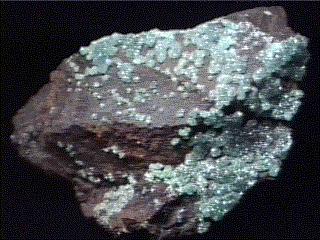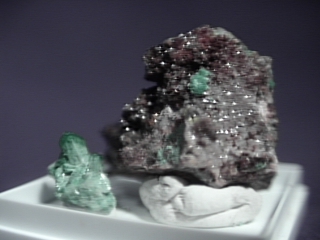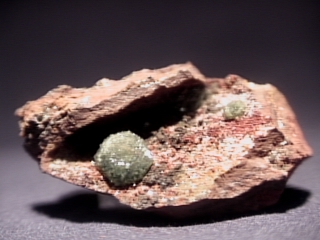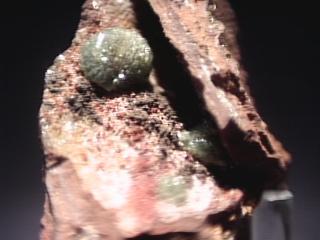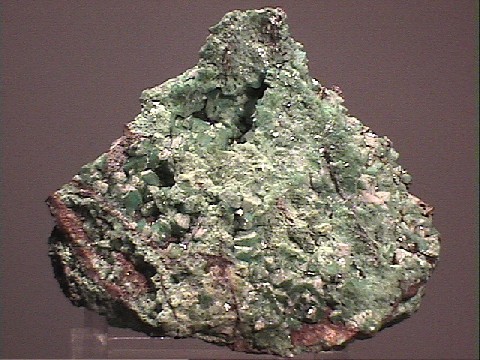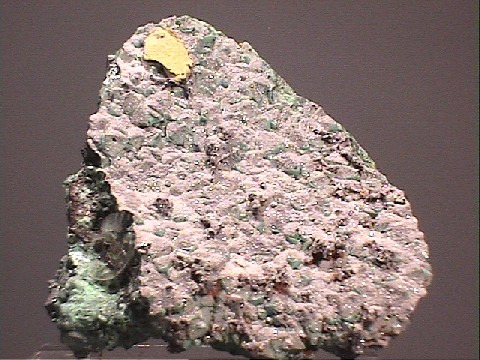 THE MINERAL CUPROADAMITE
THE MINERAL CUPROADAMITE
- Chemistry: (Cu, Zn)2(AsO4)(OH), Copper Zinc Arsenate Hydroxide
- Class: Phosphate Class
- Subclass: Arsenates
- Uses: Only as mineral specimens
Specimens
Unfortunately for collectors who love fluorescent minerals(adamite is one of the best fluorescing minerals in the world), cuproadamite does not fluoresce at all. The copper acts as a "poison" for the fluorescence, making for a fairly reliable test to distinguish cuproadamite from adamite. The test is not foolproof however, as some adamites that contain little or no copper do not fluoresce either. Nearly all properties of cuproadamite are identical to adamite except typical color, density and fluorescence.
PHYSICAL CHARACTERISTICS:
- Color is typically reddish purple, but can be purple, red or even green.
- Luster is adamantine.
- Transparency crystals are transparent to translucent.
- Crystal System is orthrombic; 2/m 2/m 2/m
- Crystal Habits include diamond-shaped, wedge-like prisms sometimes modified with minor prismatic faces and terminated by a double triangle. Mostly in druses and radiating clusters that can form wheel and "wheat-sheath" shapes. Rarely in a perfectly smooth botryoidal habit like smithsonite, but commonly found with well-formed crystal terminations that sparkle on the top of the "sub-botryoidal" surface.
- Cleavage is perfect in one direction.
- Fracture is conchoidal.
- Hardness is 3.5.
- Specific Gravity is approximately 4.6 (heavy for translucent minerals and slightly heavier than adamite)
- Streak is white.
- Other Characteristics: does not fluoresces like its cousin adamite.
- Associated Minerals are adamite, limonite, conichalcite, smithsonite, aragonite, calcite, and other oxidation zone minerals.
- Notable Occurances include the famous mines at Mapimi, Mexico; also Greece and other sites that contain adamite and copper minerals.
- Best Field Indicators are color, density, non-fluorescences, associations and crystal habits.

